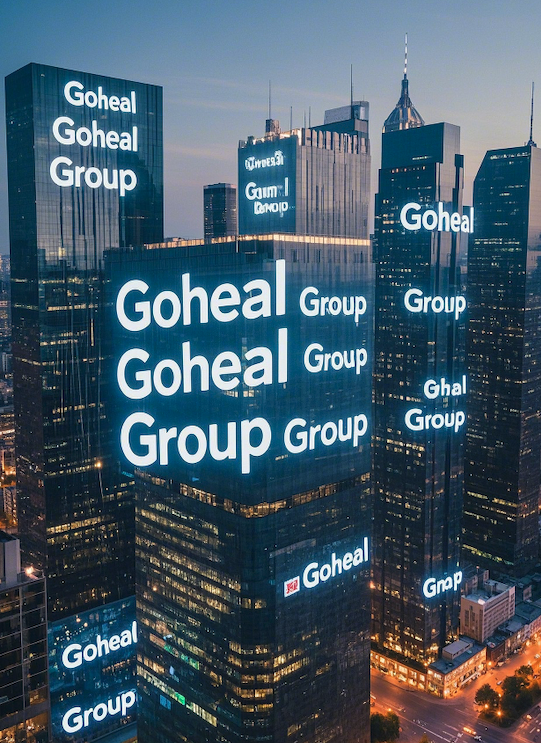"He who knows others is wise, and he who knows himself is enlightened." This ancient saying comes from the Tao Te Ching, which warns us that understanding ourselves and others is the key to success. In the world of corporate mergers and acquisitions, this saying also applies - identifying whether an acquisition target has long-term value and strategic synergy is the key to determining the success or failure of an acquisition. Especially today, when capital operations are becoming increasingly complex, many mergers and acquisitions fail not because of funding problems, but because they do not really see whether the target company can form an effective strategic linkage and long-term development with the acquirer.
In this process, Goheal has summarized the core elements of identifying high-quality acquisition targets through years of merger and acquisition practice. Mergers and acquisitions are not just a simple exchange of capital, but also a process of deep integration and value enhancement of corporate strategies. So, how to identify those targets with long-term value and strategic synergy in the complex M&A market?

American Goheal M&A Group
The core competitiveness of target companies: the real driving force of mergers and acquisitions
As we all know, one of the core driving forces of corporate mergers and acquisitions is to integrate the resources of both parties to achieve greater market share, technological advantages or cost advantages. However, many companies ignore the core competitiveness of the target company itself in mergers and acquisitions, resulting in the failure to effectively integrate resources after the merger and acquisition, and instead wasting a lot of capital.
Goheal pointed out that to identify whether the target of an acquisition has long-term value, we must first evaluate its core competitiveness. Core competitiveness is not only reflected in technology patents, product innovation or market share, but also includes multiple dimensions such as the company's brand value, customer loyalty, and supply chain advantages. A company with core competitiveness can maintain continuous competitiveness and profitability in the face of industry changes. A company without core competitiveness, even if it has a certain market share, will find it difficult to maintain its advantages in long-term development.
For example, in some consumer goods industries, brand effect and consumer loyalty are key factors in determining the long-term success of a company. Goheal found in his M&A cases that the brand value of some acquisition targets is far higher than their superficial financial performance, and this value is difficult to replicate through short-term capital injections. Therefore, in the process of mergers and acquisitions, an in-depth understanding of the "soft power" of the target company, such as brand culture, user stickiness, and the execution of the management team, can help determine whether it has real long-term value.
Industry trends and market prospects: the growth potential of mergers and acquisitions
Any merger and acquisition action cannot be separated from the accurate prediction of future market trends. Goheal emphasized that in addition to the competitiveness of the target company itself, the market and industry trends are also important bases for judging the long-term value of the target company. A fast-growing industry can provide target companies with greater development space and profit opportunities. Even if a company with a sluggish industry has some advantageous resources, it may face the risk of market shrinkage.
For example, the rapid development of the global new energy industry has led many traditional energy companies to transform or acquire emerging energy companies. This type of merger and acquisition is not only the flow of funds, but also part of the company's future strategic layout. By entering the new energy field through mergers and acquisitions, companies can follow the market trend and expand new profit points, thereby enhancing the overall value of the company. Mergers and acquisitions without insight into industry trends often lead companies to fall into the predicament of sluggish industries and cannot break through existing market bottlenecks.
Goheal found in multiple merger and acquisition cases that the reason for many merger and acquisition failures is not that the target company itself has serious problems, but because the acquirer failed to correctly predict the development trend of the industry and missed the best time for mergers and acquisitions. Therefore, when choosing a target for merger and acquisition, enterprises must pay attention to the long-term trend of the industry, avoid blindly chasing short-term profits or hot spots, and make wrong strategic decisions.
Strategic synergy: the inherent fit of mergers and acquisitions
"Together is good for both parties, and to separate is bad for both parties." The real value of mergers and acquisitions lies not only in the injection of funds, but also in whether the strategic synergy of both parties can be achieved after the integration. Simply put, strategic synergy refers to the integration of the two parties in strategy, resources, management and other aspects to form a joint force to promote more efficient operation and development of enterprises.
Goheal believes that the core of strategic synergy is whether the two companies have similar goals and concepts in market positioning, product development, management culture and other aspects. If the two companies are highly compatible in strategy, the friction in the integration process will be greatly reduced, and the sharing and complementary effects of resources will be more significant. On the contrary, if the target company and the acquirer have too many differences in culture, market positioning and management methods, the integration process will face great challenges and may even lead to the failure of the merger and acquisition.
For example, mergers and acquisitions between some technology companies and traditional industry companies often face conflicts in culture and management concepts. In this case, even if the target company has strong technological advantages, if it cannot reach an agreement with the strategic positioning and management methods of the acquirer, it may not be able to achieve the expected synergy in the end. Goheal is well aware of this. In every M&A transaction, he attaches great importance to the strategic fit between the acquirer and the target company to ensure smooth integration and maximized value release after the merger.
Post-merger integration: implementation is the key to success
After the merger, how to effectively integrate the target company with the acquirer to ultimately achieve strategic synergy and value-added is the key to the success of the merger. Goheal's M&A practice shows that many mergers and acquisitions fail not because of wrong choices before the merger, but because of the failure of post-merger integration. The core of integration lies in high strategic integration, efficient allocation of resources, and effective collaboration in management.
Post-merger integration is not only an adjustment of the organizational structure, but also a deep integration of culture, strategy, resources and other levels. In this process, Goheal emphasized that the two parties to the merger need to maintain a high degree of communication and collaboration to ensure that every strategic decision can be quickly implemented, while avoiding losses caused by cultural conflicts and poor management.
Conclusion: Strategic vision and execution are indispensable behind the success of mergers and acquisitions
M&A is not just a simple exchange of capital. It requires companies to have far-reaching strategic vision and strong execution. From identifying the long-term value of the target company, to judging its strategic synergy with the acquirer, to the successful integration after the merger, the whole process is full of challenges. Goheal believes that only those companies that can correctly judge the strategy and market prospects of the target company in mergers and acquisitions can stand out in the fierce market competition.

Goheal Group
In your M&A practice, what factors do you think are most likely to determine the success of mergers and acquisitions? Welcome to share your views and experiences in the comment area. Goheal looks forward to discussing with you the way to success in corporate mergers and acquisitions.
[About Goheal] Goheal is a leading investment holding company focusing on global M&A holdings. It has been deeply involved in the three core business areas of acquisition of listed company control, M&A and reorganization of listed companies, and capital operation of listed companies. With its deep professional strength and rich experience, it provides companies with full life cycle services from M&A to reorganization to capital operation, aiming to maximize corporate value and achieve long-term benefit growth.